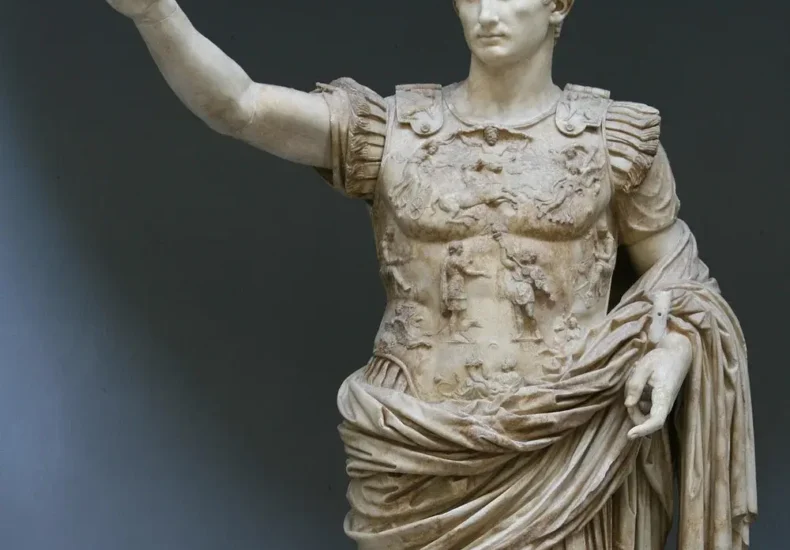
A Pledge of Loyalty in the East of Rome: The Augustus Oath of Anatolia
April 16, 1900… Belgian historian Bishop Franz Cumont of Amasya encountered a stone, a silent witness to history, in the courtyard of an Orthodox Church in Vezirköprü. Cumont’s simple note, “Monday, April 16: Copied an inscription in a Greek Church,” was actually the discovery of a treasure that would illuminate the history of the Roman

Ancient Patara Lighthouse to Illuminate the Way for Sailors Once Again
The ancient city of Patara, located in Antalya, southwestern Türkiye, is renowned for its rich history. Once the capital of the Lycian League, this vital port city was a hub of maritime trade. Now, the ancient lighthouse, built by Roman Emperor Nero and destroyed by natural disasters, is being reconstructed using its original stones, ready

Unique rock tomb discovered by chance in the courtyard of a house in southeastern Türkiye
Şanlıurfa, located in southeastern Türkiye, has added a new mysterious page to its historical record. A 2300-year-old rock tomb, discovered by chance in the courtyard of a house, sheds light on the city’s thousands of years of history. This significant discovery, announced by Şanlıurfa Governor Hasan Şıldak, once again revealed the region’s rich cultural heritage.

Archaeologists Discover Woodhenge Structure in Denmark
The recent archaeological discovery in the town of Aars, Denmark, is poised to radically change our understanding of Europe’s Neolithic period. Archaeologists from the Vesthimmerland Museum have unearthed a circular structure dating from 2600-1600 BC, known as “woodhenge,” consisting of 45 wooden pieces. This extraordinary find adds a new dimension to the prehistoric cultural interactions

Royal Divorce Decree from the Hittite King to Ugarit: 3300-Year-Old Scandalous Love and Political Intrigue
A royal scandal lost in the dusty pages of history comes to light after 3300 years. The divorce decree sent by Hittite King Tudhaliya IV to Ugarit King Ammistamru II is not just a declaration of separation, but also reveals the political intrigues, personal dramas, and legal regulations of the period. Secrets Hidden in the

Reflections of Ancient Anatolia: Unraveling the Production Center and Techniques of Obsidian Mirrors at Tepecik Çiftlik
Recent research at Tepecik Çiftlik, a site illuminating the Neolithic period in the heart of Anatolia, is uncovering the mysteries of obsidian mirrors used since the 8th millennium BC. These rare artifacts, distinguished by their elegant circular shapes and captivating reflective surfaces, offer significant insights into the social and ritualistic world of that era, beyond

Experts Working to Unearth ‘Mosaic House’ in Pergamon
In Bergama, Izmir, Türkiye, the UNESCO World Heritage Site of Pergamon is being revitalized through excavations under the Ministry of Culture and Tourism’s “Heritage for the Future Project.” Led by Prof. Dr. Yusuf Sezgin, Head of the Archeology Department at Manisa Celal Bayar University, the team is diligently working to uncover the impressive “Mosaic House,”

The Mystery of 3,500-Year-Old Ashes in Anatolia Unveiled
In 2023, excavations at Tepecik Mound in the Çine district of Aydın, Türkiye, revealed a significant layer of dense ash. Due to the color and composition of the ash, the research team hypothesized that it might be linked to a volcanic eruption. To confirm their findings, they sent samples to the Atomic Institute of Vienna

Traces of the Santorini Volcano Eruption and Tsunami Victims Found on Türkiye’s Coastline
In recent days, a swarm of earthquakes in the Aegean Sea has alarmed the residents of Santorini, leading to a rapid evacuation of the island, which has now transformed into a deserted landscape. Some seismologists suggest that this earthquake activity may be a precursor to a volcanic eruption. The recent seismic events brought to mind

Preserving Adult, Child, and Cat Mummies at Aşıklı Höyük with Climate Control
The adult, child, and cat mummies found during the 1989 excavations at Aşıklı Höyük are preserved using climate control methods. Aşıklı Höyük is one of the oldest known settlements in the world, dating back about 12,000 years. This Neolithic site is located near Kızılkaya village in the Gülağaç district of Aksaray. The Aksaray Museum displays
